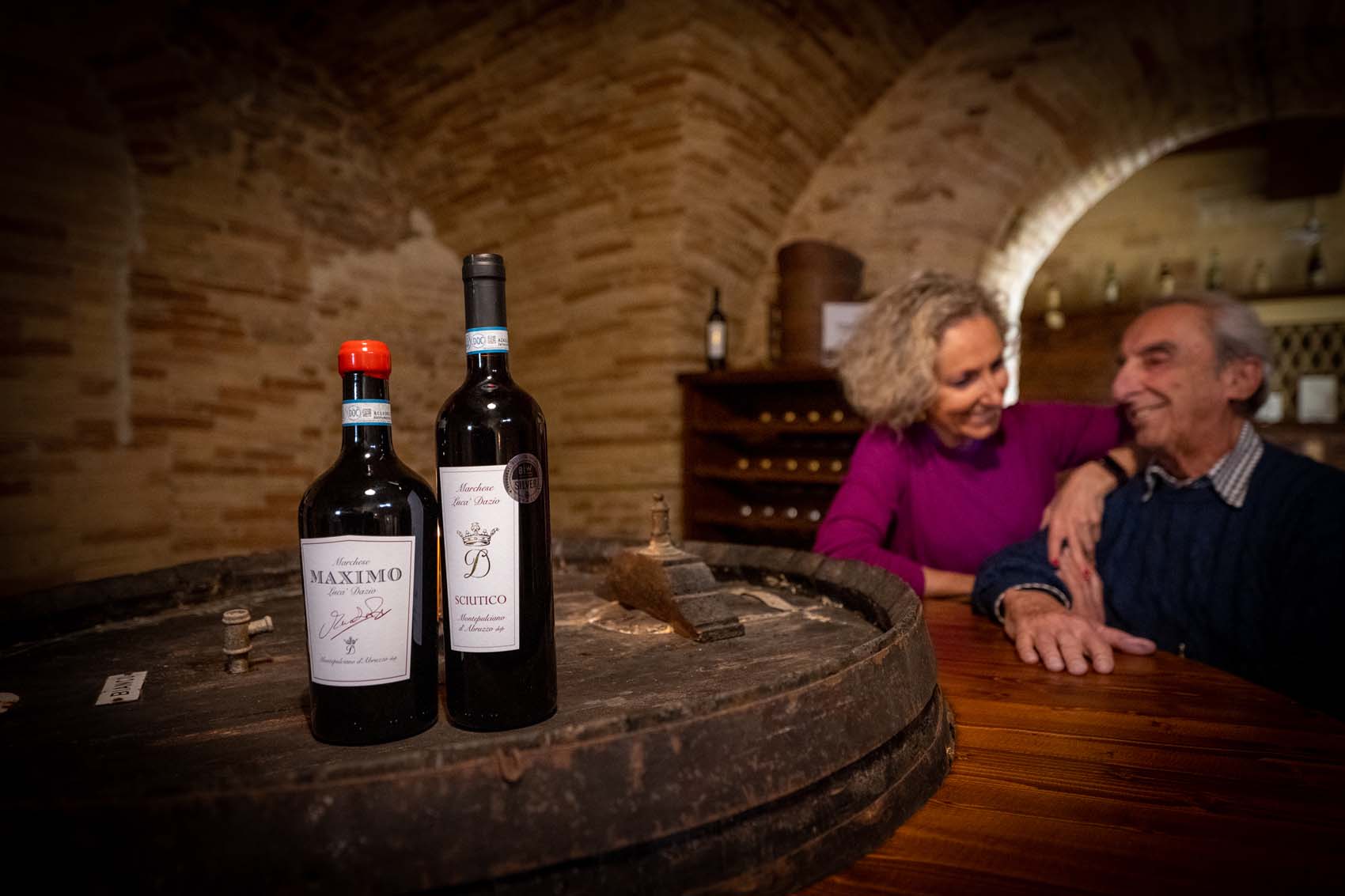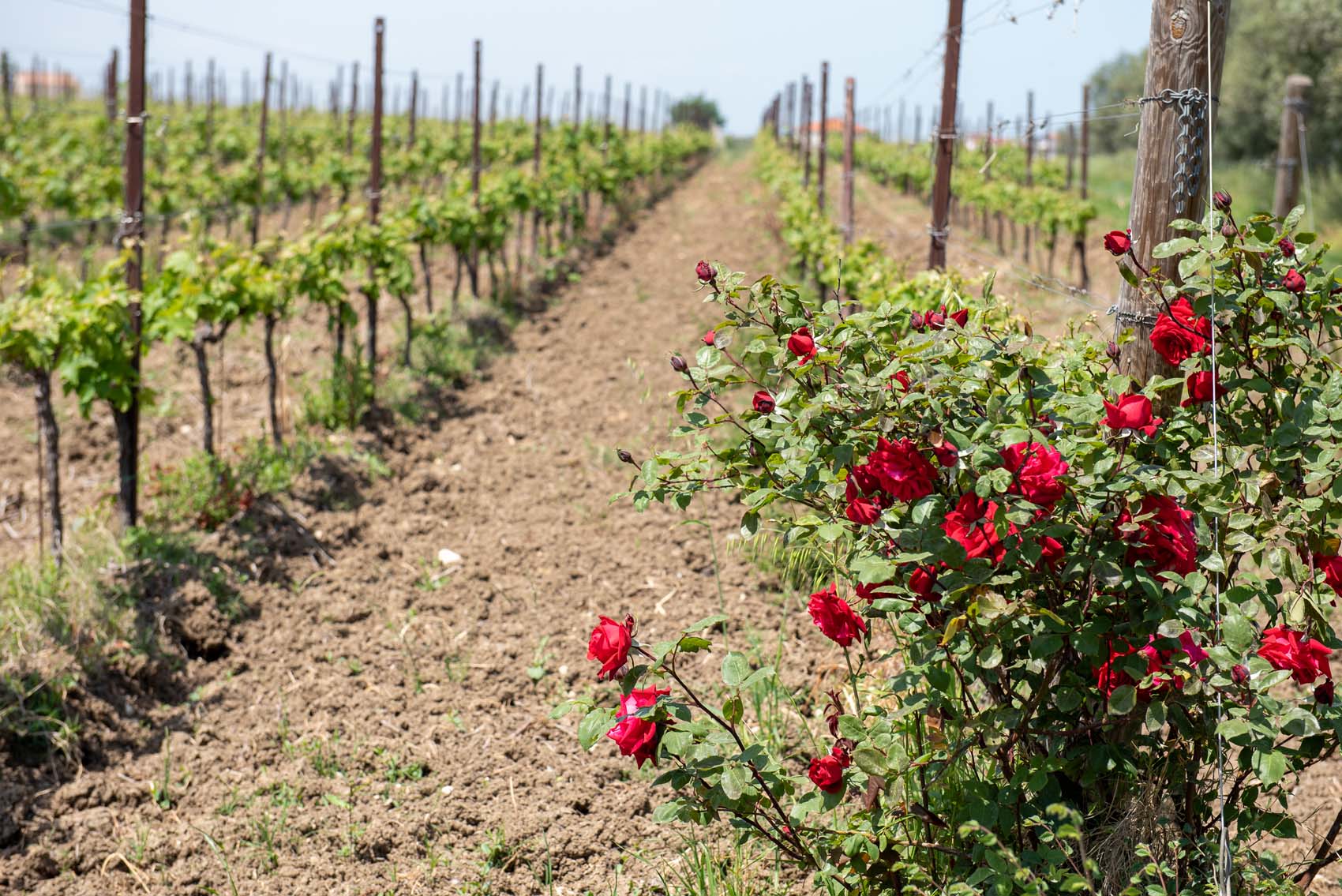Cantina Marchese
Luca' Dazio

The Lucà Dazio di Castelnuovo winery has its headquarters in San Vito Chietino, a small village in the Abruzzo region, located on a promontory reaching towards the Adriatic sea and flanked by two valleys, the Feltrino and the Valle Grande.
The climate is particularly favourable, given its position approximately 130 metres above sea level, cooled by sea breezes and protected by the Maiella and Gran Sasso mountain ranges.

The Lucà Dazio di Castelnuovo winery has its headquarters in San Vito Chietino, a small village in the Abruzzo region, located on a promontory reaching towards the Adriatic sea and flanked by two valleys, the Feltrino and the Valle Grande.
The climate is particularly favourable, given its position approximately 130 metres above sea level, cooled by sea breezes and protected by the Maiella and Gran Sasso mountain ranges.
The Estate consists of eight plots of land, twenty-three hectares of which are dedicated to vine cultivation. We pay scrupulous attention to the principles of Integrated Production and Sustainable Agriculture. Cultivation includes both traditional pergola and rows, with a density of about three thousand plants per hectare.


The Estate consists of eight plots of land, twenty-three hectares of which are dedicated to vine cultivation. We pay scrupulous attention to the principles of Integrated Production and Sustainable Agriculture. Cultivation includes both traditional pergola and rows, with a density of about three thousand plants per hectare.

The harvest is gathered by hand, according to tradition, respecting the well-being and integrity of the grapes. Subsequent processing is aimed at quality conservation in order to reach ever higher standards.

The harvest is gathered by hand, according to tradition, respecting the well-being and integrity of the grapes. Subsequent processing is aimed at quality conservation in order to reach ever higher standards.
From generation to generation
From
generation
to generation

The Lucà Dazio di Castelnuovo family, originally from Flanders, settled in the territory at the end of the sixteenth century and began cultivating vines according to ancient traditions handed down from generation to generation, today enhanced by the most modern concepts and processing techniques.

The Lucà Dazio di Castelnuovo family, originally from Flanders, settled in the territory at the end of the sixteenth century and began cultivating vines according to ancient traditions handed down from generation to generation, today enhanced by the most modern concepts and processing techniques.
The family has had an uninterrupted presence in the Abruzzo region since it received feudal possession in the sixteenth century and is still the owner of most of the lands shown in the ancient maps.


The family has had an uninterrupted presence in the Abruzzo region since it received feudal possession in the sixteenth century and is still the owner of most of the lands shown in the ancient maps.
In tune with the environment

We preserve the environment that houses our vineyards.
For this purpose, we are engaged in integrated production, in order to reduce the use of insecticide products in the vineyard, under the constant control of our agronomist.
At the same time, we protect the health of our employees, by equipping them with appropriate protective equipment in the performance of their duties.

We preserve the environment that houses our vineyards.
For this purpose, we are engaged in integrated production, in order to reduce the use of insecticide products in the vineyard, under the constant control of our agronomist.
At the same time, we protect the health of our employees, by equipping them with appropriate protective equipment in the performance of their duties.
We carry out manual harvest, identifying the optimal harvest time for each type of grape.
In addition, we use a completely natural soil fertilization process: cut grass is left on the ground as organic matter, instead of resorting to the practice of chemical weeding.
Finally, the use of irrigation is only for “rescue purposes”, according to production specifications rules.


We carry out manual harvest, identifying the optimal harvest time for each type of grape.
In addition, we use a completely natural soil fertilization process: cut grass is left on the ground as organic matter, instead of resorting to the practice of chemical weeding.
Finally, the use of irrigation is only for “rescue purposes”, according to production specifications rules.


